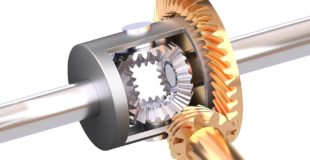https://i.ytimg.com/vi/XcO8ovnr_Z0/hqdefault.jpg
The differential is an ingenious mechanism which can be found in any car. It allows the two driven wheels of an automobile to operate at different speeds when necessary, such as during a turn.
This tutorial not only demonstrates how to model the 6 bevel gears that comprise a basic differential, but also how to test it in a straight-line and turning modes of operation using Blender’s Rigid Body Physics engine.
The end result of this tutorial, a .blend file containing the functional automotive differential mechanism, can be downloaded from http://www.otvinta.com/tutorial08.html.
source

11 responses to “Tutorial: How to Model and Test the Automotive Differential in Blender”
ohhh … I can't download blend file.
404 – File or directory not found.The resource you are looking for might have been removed, had its name changed, or is temporarily unavailable.
the values @2,57 don't work in the http://www.otvinta.com/bevel.html. 5 = Facewidth value should not exceed 1/3 of the Cone distance . ok . 4,9=Error in Facewidth ok but 4,8=Error in Facewidth / 4,7=Error in Facewidth / 4,6=Error in Facewidth / 4,5=Error in Facewidth / 4,4=Error in Facewidth … I have to decrease to 4 to have no problem
Can you guys do a tutorial on a torsion differential?
This is effing wonderful, this channel definitely deserves more subs.
Subscribed for future tutorials and thank you for creating this.
Is the huge amount of vertices needed?
i'd kick that robot in the balls
You do great work.
Can you make video, how to make in blender model of Recirculating roller screws. Youtube have SKF sample, but it does not have any math, forces(when it's work) and faq how to do model.
How much time does it take to add the robot voice to the tutorial?
Excellent, thanks a lot by your work.
Incredible. I wish I could like this more than once.
Thank you for this one. After finishing, the mechanism got stuck every time at around frame 110. I'm not sure what soved it, but after 'Baking All Dynamics' and using an End Frame beyond 300 everything went fine. (Have a peep on my channel, if you wish).